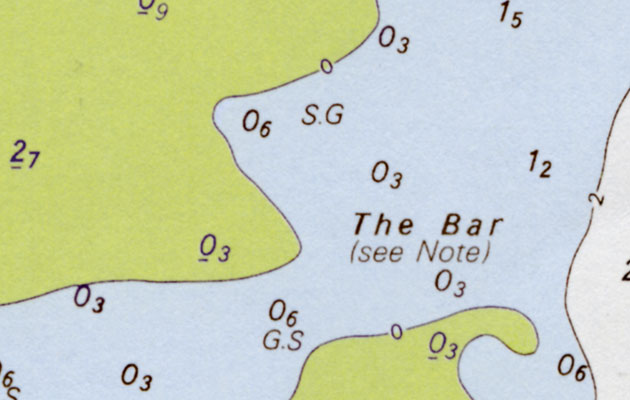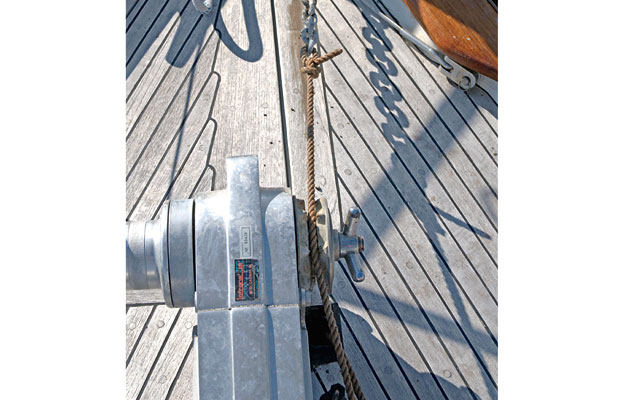Duncan Wells passes on the benefit of years spent at anchor with his definitive guide to the do's and don't's of dropping the hook
Essential tips when using an anchor
Avoid a lee shore
Make sure that you are not about to anchor on what is or may become a lee shore, with the wind blowing onto the shore. If your anchor drags and the engine fails to start, you will need enough room to leeward to set the sails and begin to claw your way off the shore. Always anchor on a weather shore, where the wind is coming off the land. Check the forecast to make sure that any wind shift during your stay will not put you on a lee shore.
Check the chart for restrictions
You can anchor anywhere you like, except in a fairway, a channel or a prohibited or restricted area. An anchor sign on the chart marks a popular anchorage. An anchor with a cross through it tells you anchoring is not allowed. Don’t anchor in oyster or mussel beds.
Check the sea bed
See what the chart says about the sea bed. Is it suitable for your anchor? Here’s a general guide:
Mud Good for most anchor types, but those with a large surface area will be more reliable
Silt Good for most anchor types
Clay Once set, holding is good for most anchors. An anchor with a sharp tip will set more readily
Sand Variable, depending on sand hardness but an anchor with a large surface area is preferable
Gravel, rock and weed These bottom types are generally unsuitable for anchoring
Check the depth
Will you still be afloat at Low Water? Have you let out enough cable to remain anchored at High Water? Even if you can get this from your GPS, mobile phone, or tablet, I’d still check it with the almanac and the relevant tidal curve. Allow enough under-keel clearance at Low Water.
Care for your ground tackle
Check the condition of your anchor and cable. Is the bitter end lashed to the boat? Never attach it with a shackle. Instead, use a lashing or thin boat rope that you can cut quickly with a knife if you need to lose the anchor and cable in a hurry. The anchor itself should be quickly deployable, attached to the boat by a lashing or a split pin.

Attach the anchor to the yacht via a retaining pin or lashing, but ensure that it’s quickly deployable
Is your cable entirely chain, or is it a rope and chain combination? Rope, when we use it for anchoring or mooring, is called warp. In a combination, we always have 10m of chain between the anchor and the warp. You are going to trust your boat and your life to the anchor and the cable, so always check the recommended weight of anchor and gauge of chain or warp for your tonnage of boat. Err on the side of caution.
Measure the scope

I use silks tied to the chain in the order of how you’d pot snooker balls (yellow, brown and pink are at the others end of these flakes)
Veering (letting out) the correct amount of cable is key and often where things go wrong. The textbook says, rightly, that you need a minimum of four times the depth for chain and six times depth for warp. In the real world, it’s easy to get confused, but you really have to know how much cable you have out.
There are different systems of marking the cable, but I use silks tied into the chain. They don’t interfere with the chain on the windlass gypsy and if you use warp, you can thread them through a strand or bind coloured cotton around it. Silks are also easier on your hands than plastic cable ties and more durable than painted chain links.
Then you need a code. You could run the colours alphabetically, every 5m. I use the order in which one pots snooker balls! No, I don’t play, I just seem to have remembered this. So on my yacht it goes like this: red 5m, yellow 10m, green 15m, brown 20m, blue 25m, pink 30m, black 35m, then double up two red for 40m, two yellow for 45m and so on. Put this code inside the foredeck locker so all the crew know how it works.
Signal
You need to display an anchor ball by day and an all-round white light by night. When I arrive at an anchorage in the dark, I set the anchor ball as well as the light, so I don’t have to get up at dawn.
Watch for swinging
If you’re joining other boats at an anchorage, see how they are lying and try to estimate how much cable they’ve got out (going on height of tide). Then you can allow enough swinging room for changes in the direction of wind and tide. Long-keel boats will lie to the tide more than the wind. Yachts with a short fin keel and high topsides may lie to the wind more than the tide.
Guard against dragging
Use transits ashore, or bearings to marks, or a GPS anchor alarm to check if you are holding. I simply put a hand on the cable outside the bow roller from time to time. If all is quiet, it’s holding.
Use a snubber
Attach a length of line, stretchy nylon preferably, to the chain using a rolling hitch, then make the line fast to a cleat and run the chain out until it goes slack and the tension is taken on the line. Apart from taking the pressure off your expensive windlass, this also acts as a snubber.
If there is any swell, put a split pin between the bow roller cheeks or tie a lashing across to stop the cable from jumping out.
Keep watch
If you’re taking care of all of the above, you should be able to relax at anchor. Once I feel I’m well anchored, I’ll sleep right through the night. It can be a good idea to wake in order to watch the boat through the turn of tide, but with experience of your anchor and of different conditions, you’ll be able to gauge how necessary this is.
For all the latest from the sailing world, follow our social media channels Facebook, Twitter and Instagram.
Have you thought about taking out a subscription to Yachting Monthly magazine?
Subscriptions are available in both print and digital editions through our official online shop Magazines Direct and all postage and delivery costs are included.
- Yachting Monthly is packed with all the information you need to help you get the most from your time on the water.
- Take your seamanship to the next level with tips, advice and skills from our expert skippers and sailors
- Impartial in-depth reviews of the latest yachts and equipment will ensure you buy the best whatever your budget
- If you are looking to cruise away with friends Yachting Monthly will give you plenty of ideas of where to sail and anchor










